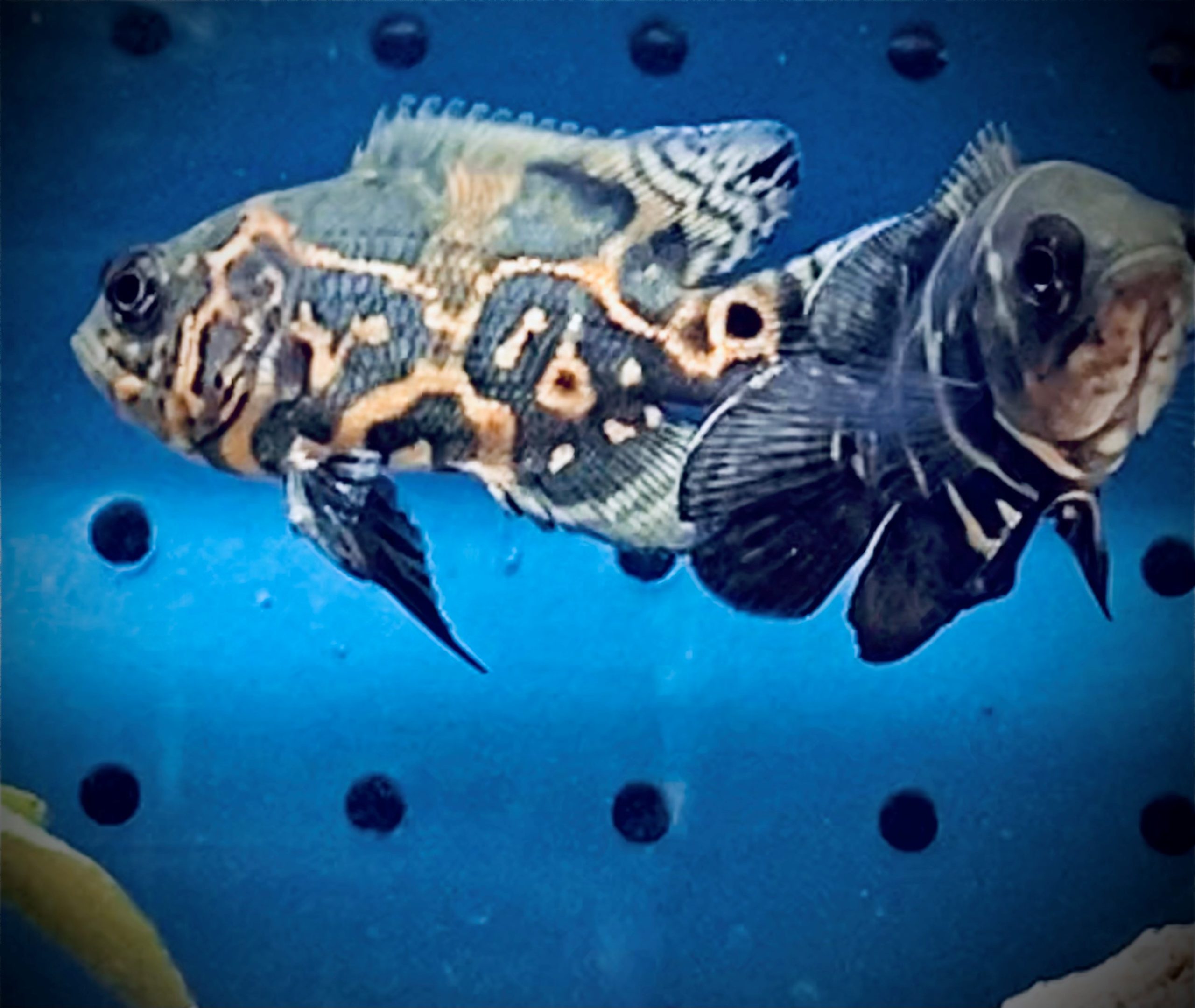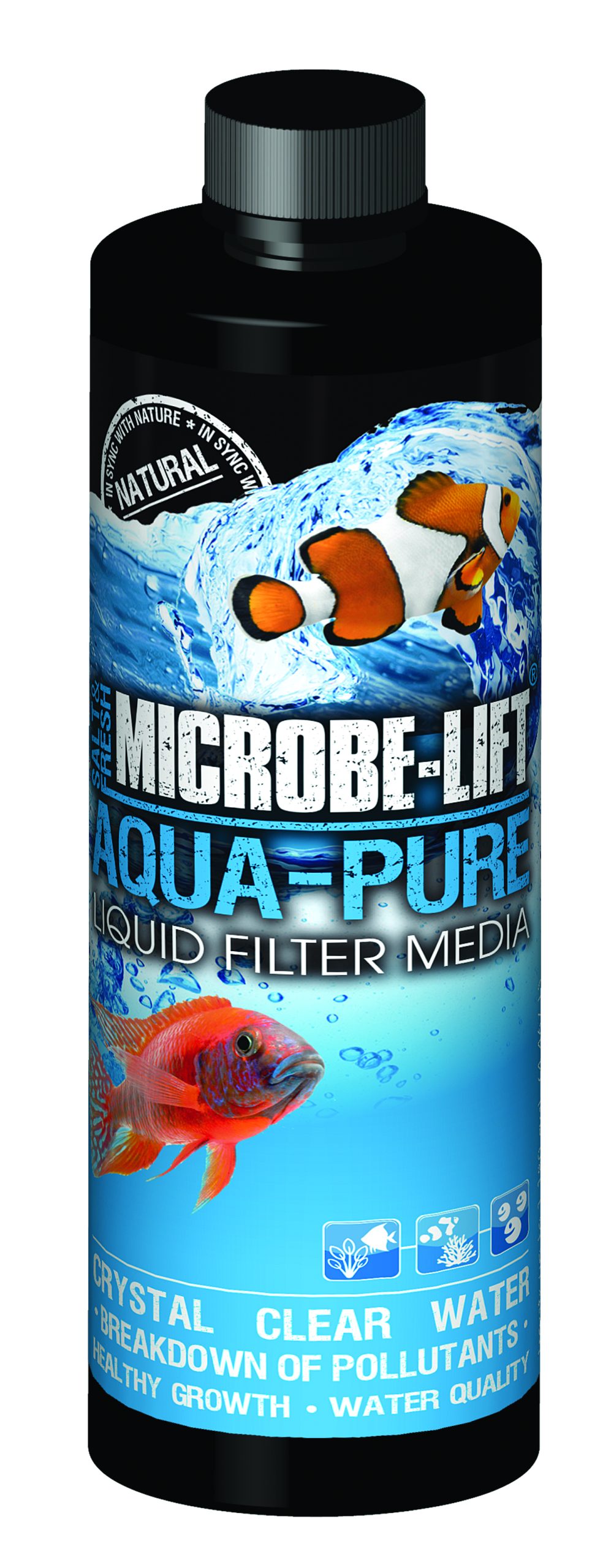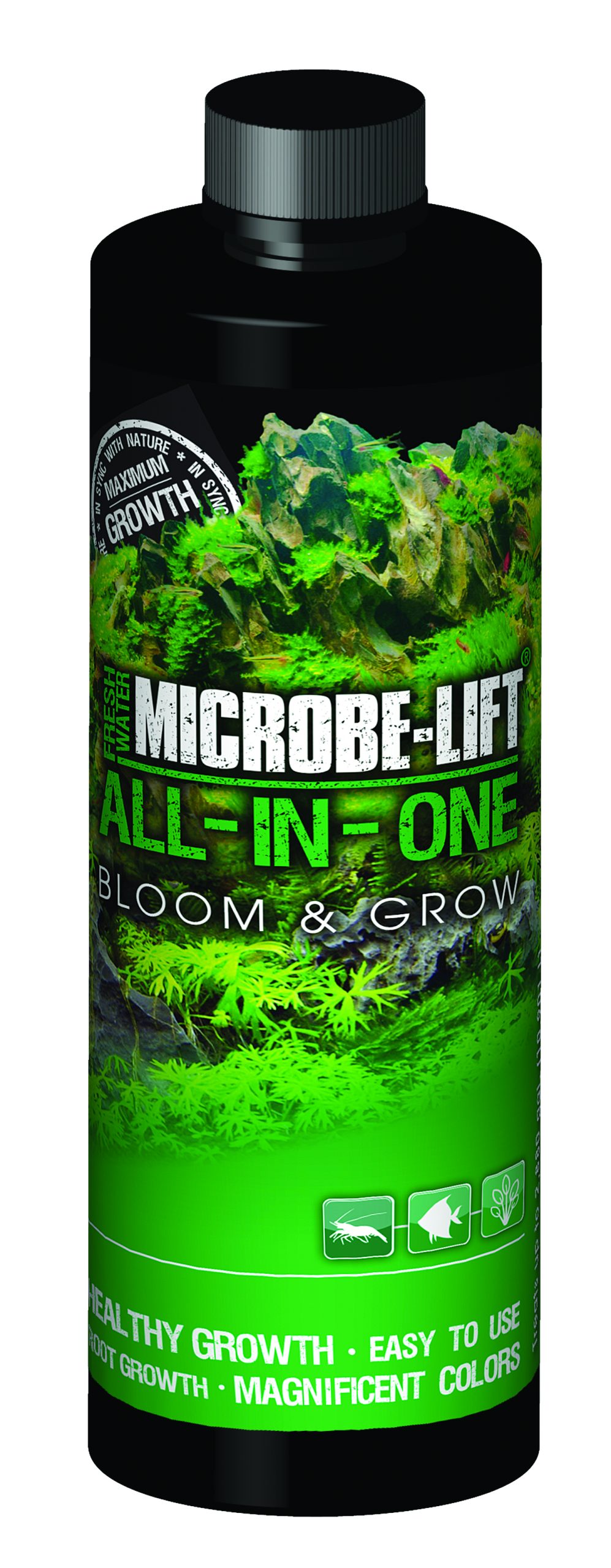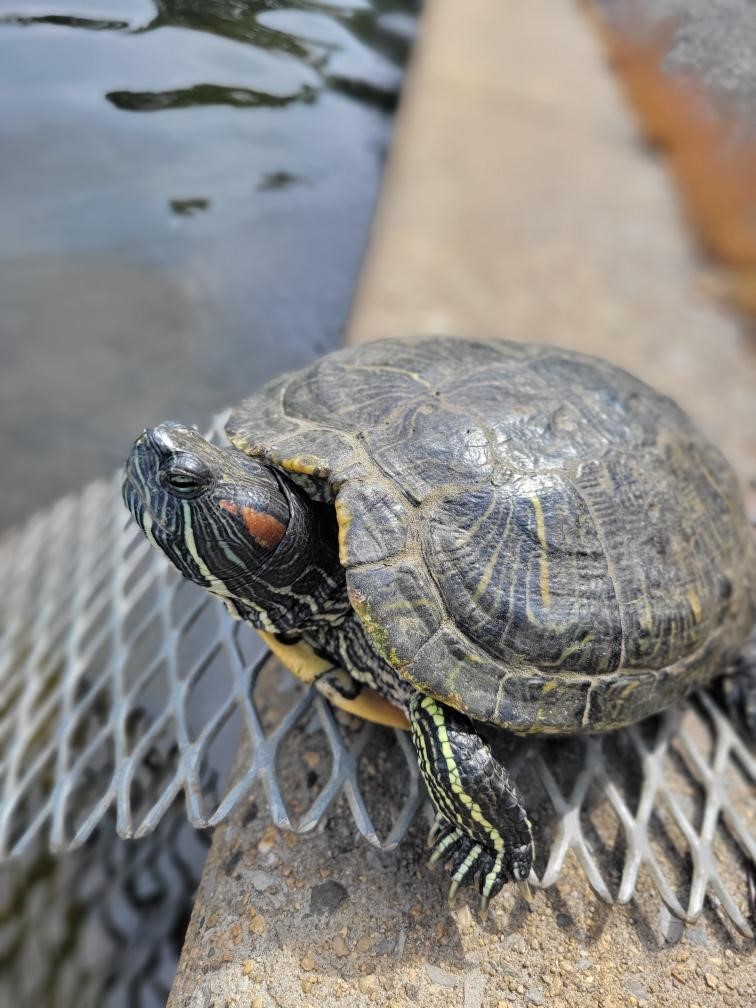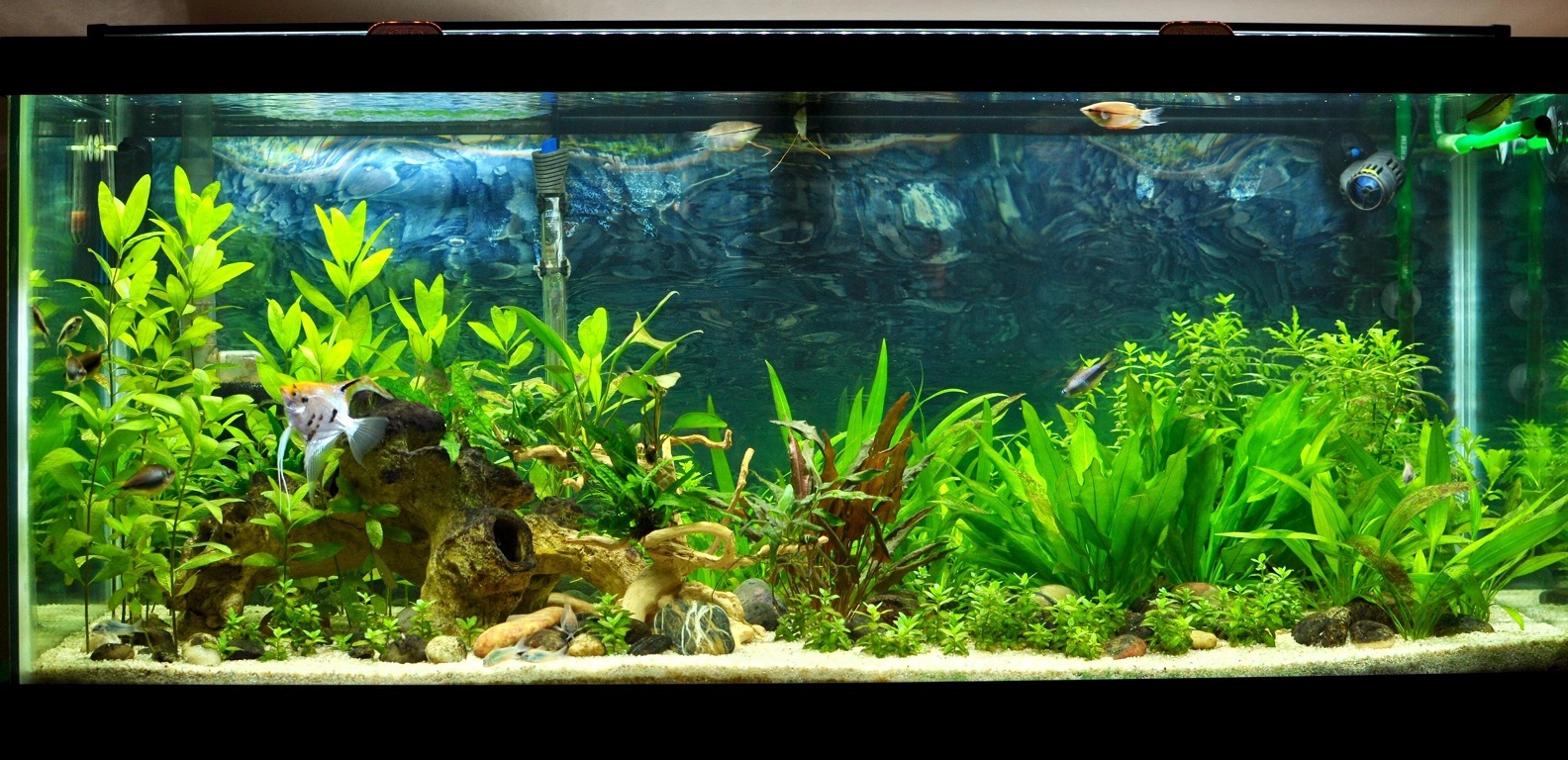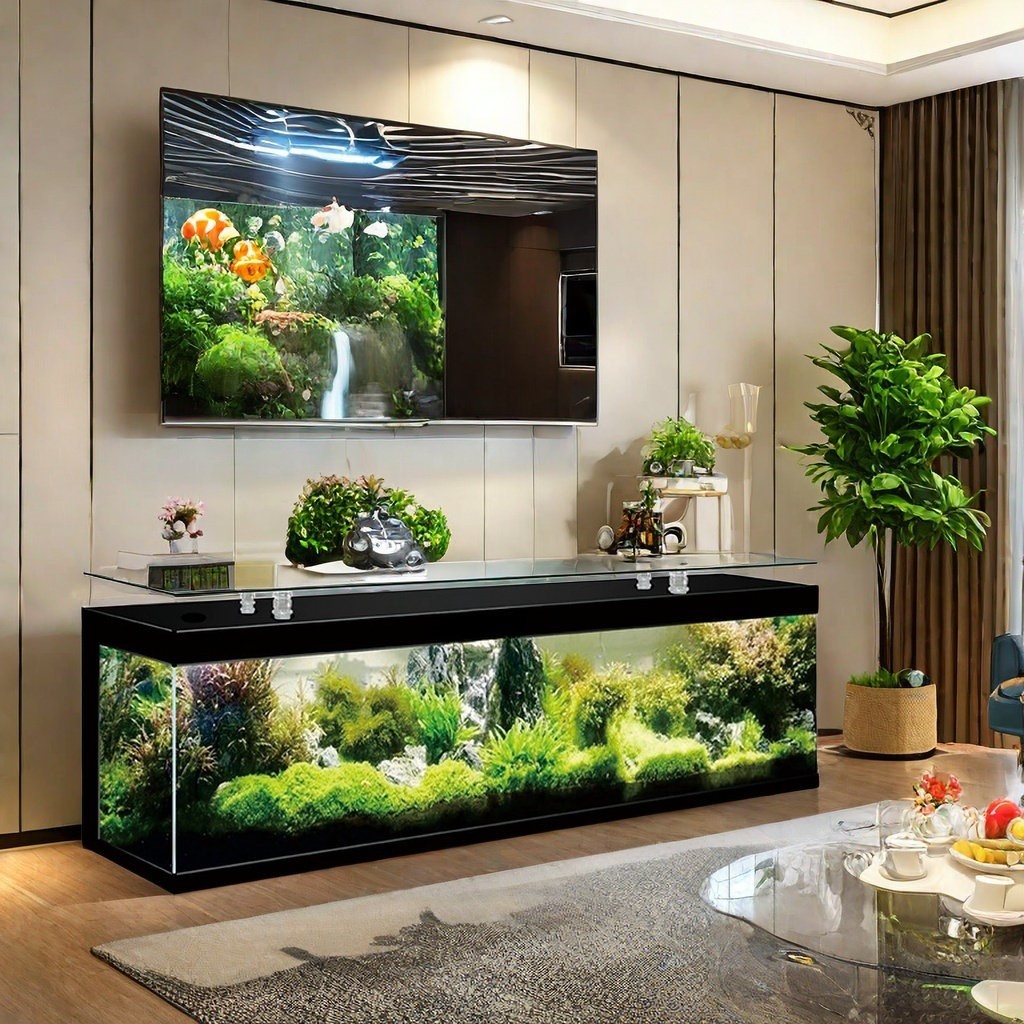
- Easier to maintain:
While it might seem counterintuitive, larger tanks can be easier to maintain in some ways. The greater water volume dilutes waste products, leading to less frequent water changes and maintenance. A larger tank also provides more space for your hands to work when cleaning or rearranging the aquarium.
- More stable water parameters:
Large tanks have a greater water volume, which means fluctuations in temperature, pH, and waste product levels are less drastic and easier to manage. This provides a more stable environment for your fish, reducing stress and promoting better health.
- Greater space for fish:
Fish need space to swim, explore, and establish territories. A larger tank allows for a more natural environment, reducing stress and preventing aggression among fish. Along those lines, smaller fish would probably do best in a large, long rather than high decorated/planted tank.
- More room for aquascaping:
Larger tanks offer more opportunities for creative aquascaping, allowing you to create visually appealing and stimulating environments for your fish.
- More forgiving of mistakes:
In a smaller tank, even a small mistake like overfeeding can have a significant impact on water quality. In a larger tank, the larger water volume helps to buffer these mistakes, making it less likely to cause serious problems.
- Greater stocking options:
Larger tanks allow you to keep a wider variety of fish species, including those that might be too large or require too much space for smaller tanks.
- Can be more visually appealing:
A large, well-maintained aquarium can be a stunning centerpiece for any room.
CAROLYN SAYS: Don’t forget that MICROBE LIFT has also made Aquarium keeping much easier, too! You have Special Blend, Nite Out II, and Gravel & Substrate Cleaner (GSC)—Great products that are natural, safe and effective. Check our website, https://microbelift.com and see all the helpful “tools” to keep a healthy aquarium…
AQUARIUM CLUB MEMBERS SHARE ON THE TOPIC
As someone who has 5 aquariums (12g, 30g, 40g, 75g and 125g), bigger tanks take me around the same amount of time each week. I typically spend 3-4 hours weekly on all 5 tanks (total, not each) and I change 75% of water in each tank every week and clean the filters monthly.
IMO a bigger tank does give you more leeway with maintenance, but it can also make you lazier and more forgetful of that maintenance, leading to health issues for your fish. As much as I don’t need to do massive water changes every week, it pays dividends with regards to improved fish health and less time / energy I spend dealing with disease and death.
If I had 5 Nano aquariums, I’d probably quit the hobby because they’re more annoying to maintain, ha-ha
75% water every week!? Why!? Do you not have a lot of plants? I can’t imagine needing to change that much. Even without plants I wouldn’t see doing more than a 25% change every week. You know your parameters obviously, I’m just surprised it’s that much.
I have a 20g that we do a gravel vac maybe monthly, if that, and almost never do water changes. It has plenty of plants and parameters are always solid. We haven’t lost a fish in 2 years. We did have some bacterial growth happening with our rasboras, but we just unplugged the heater for a week and put in some conditioner and it went away.
I’ve got a 55, 65, and 75. The maintenance is very easy. I clean the filters maybe every 6 months. All of them have sand as their substrate and are all planted heavily. Occasionally do water changes but mostly just do water top offs. Pretty much with a big tank set it up, plant it, and let the filter run for a month or two while the cycle begins before introducing any fish. From there introduce new fish slowly (every week or every other week) until you’re at where you want it stocked. From there it’s usually very stable. I run canister filters on my 75 and 55 and run a sponge filter in the corner of each one. My 65 I run 2 sponge filters and a small HOB. The tank only has one fish in it. A very, very, very aggressive 6-year-old African cichlid that my dad gave me. I had the tank set up for snail growing and didn’t have any fish and his cichlid had killed all its tank mates so I took it.
I have two 6 gallons, a 10 gallon and a 20 gallon with plans for something bigger as soon as I can find the room.
I don’t do weekly water changes on any of my tanks. The most heavily stocked tank (the 10 gallon) gets a 30% water change maybe every 10 days. The 6 gallons get top offs, with a 25% change maybe once a month. The 20-gallon maintenance schedule really depends on how many fry in the tank (I’ve got guppies… currently on a population up swing).
For any aquarium, your maintenance is really going to depend on the level of plants, how many fish and how established your biological filter is. The bigger tanks shouldn’t need more maintenance than the smaller ones, especially if you’re not overstocking them.
I found bigger is easier. I have a 20g shrimp tank that always looks like crap, my 40 breeder looks better, my 55 & 75 are cichlids and they always look the same. I have a 100g pond that looks better when I do less to it. All I have to do on that is clean a filter sock couple times a week.
I have a 180L tank divided into 2 parts, the maintenance is feed the axolotls every 2/3 days and otherwise it mostly looks after its self. Water is crystal clear unless I have been disturbing things or when one of them stomps on a poop.
Bit of algae growing on surfaces but that seems to be getting better over time. Our tap water is ~40ppm nitrate confirmed both by the water companies’ measurements and API test kits, over time it has been coming down. The algae now seem to be growing less aggressively. Nitrate tests are not the easiest to read but it’s gone from red to orange, probably somewhere around 20ppm by now. Hopefully it will keep decreasing.
Larger tank means more space for plants that do a lot of the work for you.
I have a 55-gallon planted tank. Most work is trimming the plants which I need to do every month or two.
Other than that, I do a water change maybe every month or so. A couple times a year I refill the co2 canister. Twice a year I shut it down and clean out the canister filter which takes an hour or so.
About once or twice a year I get a wild hair and escape or a deep clean or something like that
I started off with a 10 then after a year I got a screaming deal on a 60 so made the jump and it pretty much takes care of itself. I just top up the water when it drops down and change the filter maybe once a month. Then do a solid water change once or twice a year. Getting a variety of different plants really helps keep the nitrates down and does most of the work for you.
As much as you want it to be, but the results reflect it.
You can do a Walstad which requires almost no maintenance other than trimming and topping off. Or you can do a high-tech tank with fertilization protocols, weekly water changes and biweekly trimming.
It’s way easier to keep a big tank than a small tank.
I think bigger tanks are much easier to maintain, I see people saying they do water changes on their 100+ gallon tanks weekly/bi weekly but I think that’s a bit overkill. I have an overstocked 75g that I change the water on maybe once a month (50%) and I wouldn’t even need to do that. My tank is heavily filtered and has a lot of terrestrial plants rooted so that’s a big reason why but the most maintenance I have to do is scraping algae off the glass once a week. I expect those monthly water changes to go down to once every 2 months once I move my guys over to a 200g.
Comparatively I have a 40g I just set up that only has 2 parrots and a school of rummy noses but that 35g difference makes me a bit more conscious of the waste in the water so I do changes on that one weekly. It’s also not nearly as established as my 75g and has a fraction of the terrestrial plants
The bigger the more time you have to react. So, let’s say your heater goes in in a 10 gal. You have hours to react. In a bigger tank that time goes to days to even sometimes weeks. Obviously, that’s just an example but it stands for everything. As far as maintenance I do plants as needed (some grow way faster than others), I scrub down the front glass about once a month (I have algae eaters that appreciate the scum on the back and sides of tank) I “clean” (just swish it in a bucket of tank water) the filter about every 3 months. And I do water changes every 2 months. I water test all my tanks regardless of size weekly. If anything, I find it’s less work than my smaller tanks.
Firstly, how big is a “big” tank? If you’re looking at going from a 15g to a 55g is not much of a difference IMO, a little more water to change and a little more space to scape, bigger filter to clean but it’s not a huge step. I’ve just upgraded from a 100g to a 180g, there’s an extra FX5 to clean and maybe 20 minutes longer to fill it up after a water change. A little more $ of Flourish, and a whole lot more enjoyment watching my fish.
The bigger you go the more you need to plan for how maintenance will be done. Both my canisters have long hoses attached to their drains so I can drain them before uncoupling them for cleaning. My 500g had a drain from the sump that went straight out onto the lawn, and I made up a siphon hose from 1″ pipe with a U-bend that I could hang over the top and walk away while it drained down to the right level with no chance of emptying the tank of I get distracted. A 50% water change would take nearly an hour to refill. More often than not I’d just open the drain in the sump and leave the garden hose running into the tank for 30-ish minutes. It was the easiest big tank I’ve had to look after, just more time consuming due to the volumes involved.
For your 55g it would be money well spent to get a siphon long enough to reach the nearest drain/door/window so you don’t need to carry buckets.
Personally, I think a python would be worth it for refilling too, especially if you’re having plants and don’t want to disturb the scape tipping in buckets of water, but YMMV.

